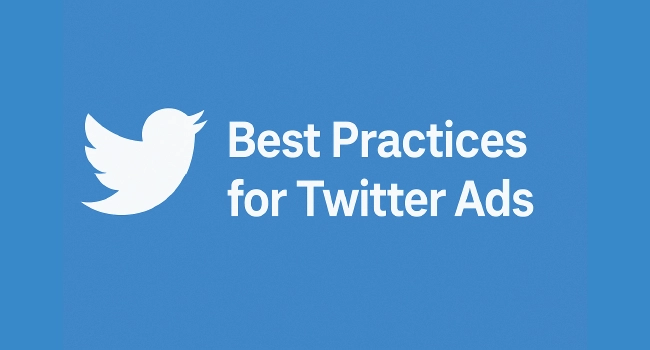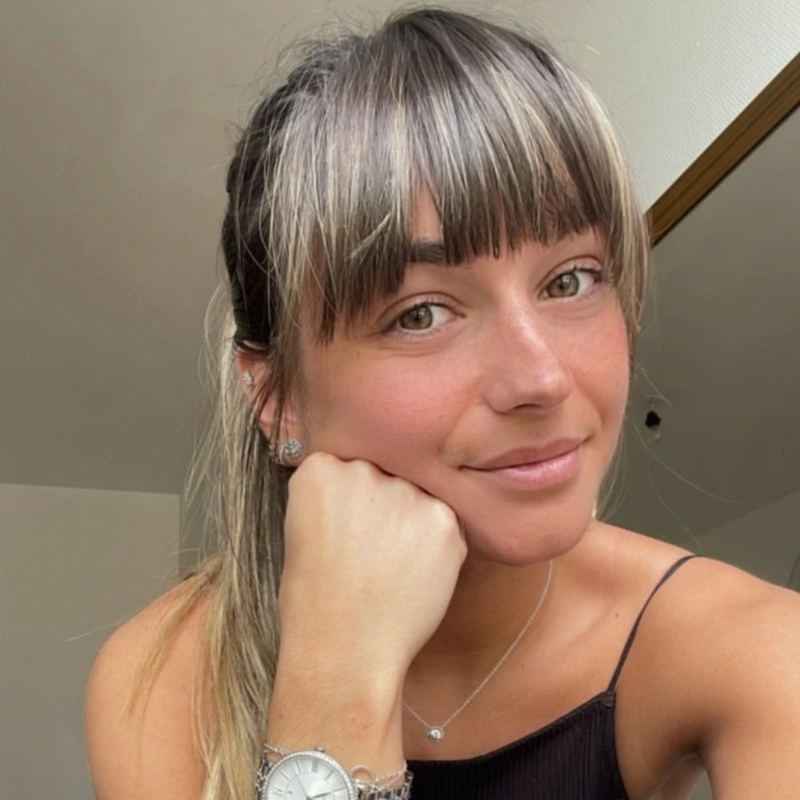
When you want results on X, one of the first things you need to understand is the best practices for Twitter ads.
The platform has changed a lot over the past years, from creative rules to new targeting options, and running campaigns without understanding these updates can burn through your budget fast.
In this guide, we’ll walk through what’s changed, how to craft ad copy that gets approved, and ways to set up targeting that actually converts. You’ll also see how to measure results properly and avoid the most common pitfalls, so you can turn your Twitter ads into a reliable growth engine.
What’s Changed on Twitter Ads
To get the most out of the best practices for Twitter ads, you first need to know what’s new this year. X has rolled out important changes that affect how you set up and run campaigns.
-
Optimized Targeting is now the default. This feature expands your audience beyond your chosen settings, but it still respects key filters like location, age, and exclusions. It helps your ads find people who are more likely to convert.
-
Keyword Ads capture real-time intent. Unlike old keyword targeting, this option focuses on what people are actively searching on X right now. It works more like search ads than traditional interest-based ads.
-
No hashtags or URLs in ad text. X updated its quality policy, and ads that break this rule get rejected. Instead, you should place links in Website or App Cards where they belong.
-
Verification is required. To run ads, your account must be Premium or a Verified Organization. Without it, your campaigns won’t get approved.
-
Short, mobile-first creative matters. X now recommends copy under 100 characters and video under 15 seconds for the best performance.
These updates can feel overwhelming, but once you know them, you’ll avoid wasted spend and rejected ads. More importantly, you’ll start your campaigns on the right foot with a clear edge over advertisers who haven’t kept up.
Best Practices for Twitter Ads: Creative, Targeting & Budgeting

When you think about the best practices for Twitter ads, hree things matter most: how you design your creative, how you set up targeting, and how you manage your budget. Get these right, and you’ll build campaigns that not only look good but also perform consistently.
Creative Compliance & Impact
Strong creative gets attention, but on X it also needs to follow the rules. Keep ad text short, 50 to 80 characters is ideal, and limit emojis to one.
Always avoid hashtags and URLs in the text; instead, use Website or App Cards for clean calls to action. Short videos work best, with 15 seconds as the sweet spot, and vertical (9:16) video tends to perform strongest on mobile.
Consistent branding throughout the ad makes your message easier to remember. For testing, create at least three variations of each ad: one text-only, one with an image, and one with a video.
Timing also plays a role, since posts perform better when audiences are active. That's why it helps to understand the best time to post on Twitter, especially when promoting ads around trending conversations.
Targeting Strategy
Reaching the right people is just as important as the creative. Optimized Targeting can now expand your reach automatically, but it still respects the basics like age and location.
You can refine audiences by using follower look-alikes, tailored audiences from your website visitors, or real-time intent with Keyword Ads.
Align these tools with your broader Twitter marketing strategy so every campaign supports your larger goals. For example, if you're launching a new product, start with follower look-alikes to build awareness, then layer Keyword Ads to capture people searching for similar items.
Ads to capture people searching for similar items. Always exclude converters to avoid wasted spend, and remember that retargeting past visitors with Tailored Audiences often brings the highest ROI.
Engagement & Building Momentum
On X, engagement fuels visibility. Ads with more likes, comments, and retweets get pushed further, since the algorithm favors content that sparks conversation quickly. That early wave of interaction can be hard to generate, especially if you're starting from scratch.
One way to kickstart this process is through our Buy Twitter Retweets service. It helps your ads gain traction faster, signaling activity to the algorithm while you focus on crafting strong creative and targeting.
We offer affordable prices and never use bots, every retweet comes from a real account. By building momentum early, you create the conditions for both organic reach and stronger paid results.
Budget & Bidding
Budgets on X work best when you scale gradually. Start small, then increase spend step by step to give the algorithm time to learn.
As a rule of thumb, keep changes under 20% of your daily budget every 3–4 days. Auto-bidding is often the easiest way to drive results, especially in sales campaigns, but once you see stable performance, you can experiment with manual bids.
Make sure each ad group has a minimum test budget, usually $50 to $100, so the data is meaningful. Campaigns also need at least 50 conversions in a learning phase before optimization kicks in, so give them enough time to stabilize before making adjustments.
Formats That Win on X
Choosing the right ad format is just as important as choosing the right message. To follow the best practices for Twitter ads, you need to know which formats deliver the strongest results for your campaign goals.
-
Promoted Ads: These are your standard image, video, carousel, or text-only ads. They’re flexible and work well for awareness, engagement, or conversions.
-
Vertical Video Ads: Designed for mobile, these 9:16 videos take up the full screen. They perform best when kept under 15 seconds and focused on one clear message.
-
Website Cards and App Cards: These formats add clickable buttons that make your calls to action clearer. They’re especially useful for driving traffic or installs without breaking X’s ad text rules.
-
Carousel Ads: Great for storytelling or showcasing multiple products in one swipeable format.
-
Dynamic Product Ads (DPAs): Perfect for retargeting, as they automatically show people the products they’ve already viewed or added to cart.
-
Collection Ads: Combine a main hero image or video with smaller product images below, giving people more to explore in one ad.
-
Amplify and Takeovers: High-visibility options like pre-roll on premium video or trending spot sponsorships. They’re best for big campaigns where you want massive reach fast.
-
Branded Live Streams and Notifications: Useful for events and launches, where real-time engagement keeps the spotlight on your brand.
The best approach is to match formats to objectives.
For example, a product launch might use a Takeover for visibility, followed by Website Cards to drive traffic, and then DPAs to close the loop with retargeting. By mixing formats this way, you keep your campaign both creative and efficient.
Brand Safety & Suitability by Design

Protecting your brand is part of the best practices for Twitter ads, because placement matters as much as performance. You don’t want your ad showing up next to content that doesn’t align with your values. X gives you tools to control this.
-
Sensitivity Settings: Choose between conservative, standard, or relaxed. If your brand is cautious, conservative keeps your ads away from riskier content. If you want scale, relaxed lets you reach more people.
-
Adjacency Controls: You can block your ads from appearing near up to 4,000 keywords and 2,000 accounts. This is powerful if you want to avoid competitors, sensitive topics, or certain conversations.
-
Enhanced Blocklists: Upload your own blocklist of words or handles so ads only run in safe spaces.
-
Third-Party Verification: Partners like DoubleVerify and IAS help monitor brand safety. They add another layer of control so you know your spend isn’t wasted.
For example, if you’re promoting a family-friendly product, you can use a conservative sensitivity setting, block any adult terms, and layer on verification. If you’re running a trending campaign, you might choose a relaxed setting but still use blocklists to avoid unwanted associations.
Measurement & Attribution That Actually Works
Measuring results is one of the most overlooked parts of the best practices for Twitter ads, yet it's the key to knowing what's driving real growth. Without proper tracking, you're guessing instead of learning.
-
X Pixel: Install the Pixel on your site to track actions like purchases, sign-ups, or page visits. This gives you the raw data you need for optimization.
-
Conversions API (CAPI): Pair the Pixel with server-to-server tracking for more reliable reporting. This connection makes sure you don't lose data if a browser blocks cookies.
-
X Click ID (twclid): Every ad click carries a unique ID. Capture it on your landing page, then send it back with conversion events. This improves match rates and reduces wasted spend.
-
Deduplication: When using Pixel + CAPI, make sure you're sending both events with the same conversion ID so X doesn't double count.
-
UTMs for cross-analysis: Even though you can't put URLs in ad text, you should still use UTMs in your destination links. This lets you compare X data with Google Analytics or other reporting tools.
When your measurement setup is solid, every campaign becomes a learning engine. You know what works, you stop guessing, and you can scale with clarity.

Common Pitfalls & Troubleshooting
Even when you follow the best practices for Twitter ads, small mistakes can derail a campaign. Knowing the most common pitfalls helps you avoid wasted time and budget.
-
Disapprovals for ad text: Ads that include hashtags, URLs, or too many emojis often get rejected. Keep copy clean and concise, and use Cards for links.
-
Account eligibility issues: You need to be Premium or a Verified Organization to run ads. Without verification, campaigns won't get approved.
-
Creative fatigue: Running the same ad too long lowers engagement. Rotate fresh variations every two to three weeks.
-
Budget resets: Making large budget or targeting changes too quickly forces campaigns back into learning mode. Scale gradually instead.
-
Overlapping audiences: If multiple ad groups target the same people, you compete with yourself and drive up costs. Always check for overlap when building campaigns.
A simple way to troubleshoot is by asking: is the issue creative, targeting, or setup? For example, low engagement usually means weak creative, while high cost per conversion may point to targeting or budget pacing. Narrowing down the root cause keeps fixes simple and effective.
Conclusion
Advertising on X is most effective when you follow the best practices for Twitter ads as a system, one that combines strong creative, smart targeting, clear measurement, and brand-safe placement. Each part supports the other, and skipping one usually means weaker results.
By keeping your copy sharp, testing different formats, and giving your campaigns time to learn, you set yourself up for consistent growth.
The tools are there to help you succeed, but it’s how you use them that makes the difference. Start small, stay flexible, and keep refining. With the right approach, X ads can become one of the most reliable channels in your marketing mix.
FAQs | Frequently Asked Questions |
How long should I run a Twitter ad before making changes?
Give campaigns at least 3–4 days of consistent spend before adjusting. This allows the algorithm to learn and stabilize performance.
Can I run Twitter ads without having a large following?
Yes. Your audience size doesn’t limit your ability to advertise. Paid campaigns let you reach new people even if your profile is just getting started.
Which industries see the highest success with Twitter ads?
Tech, entertainment, sports, and ecommerce brands often lead the way. However, strong creative and clear targeting can make Twitter ads effective across many industries.
What’s the difference between Twitter ads and boosted posts?
Boosted posts are promoted tweets with limited options, while Twitter ads give you access to full campaign objectives, advanced targeting, and better measurement tools.
